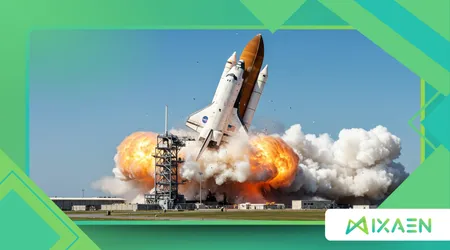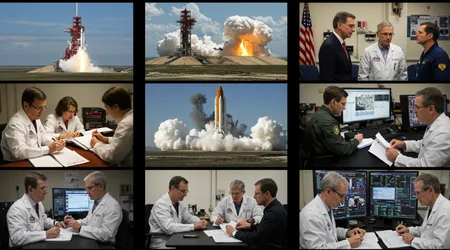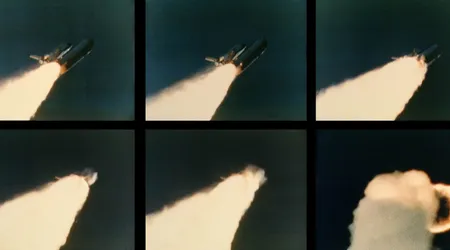Lessons from the Challenger Disaster That Still Matter Today

The Lessons from the Challenger Disaster remain urgent even in 2025. Almost four decades later, the tragedy still echoes through aerospace, engineering, and decision-making processes across industries worldwide.
Anúncios
When NASA’s Space Shuttle Challenger disintegrated just 73 seconds after liftoff on January 28, 1986, killing all seven crew members, including teacher Christa McAuliffe, it became a watershed moment in space exploration and organizational accountability.
Understanding this event is not simply about mourning; it is about learning. From engineering flaws to communication breakdowns, the disaster shaped safety culture in aviation, spaceflight, and beyond.
These Lessons from the Challenger Disaster continue to influence how complex organizations manage risks, address ethical responsibilities, and balance ambition with human lives.
Today, as private companies like SpaceX and Blue Origin lead new missions to the Moon, Mars, and low-Earth orbit, the lessons resonate louder.
The tragedy serves as both a warning and a guide for an era where exploration is no longer limited to government agencies. If we neglect what Challenger taught us, are we doomed to repeat history?
Human Lives Above Deadlines
The pressure to maintain NASA’s launch schedule played a pivotal role in Challenger’s demise. Engineers had raised concerns about the O-ring seals failing under unusually cold weather, but decision-makers prioritized timelines over safety.
This highlights one of the most profound Lessons from the Challenger Disaster: human lives can never be secondary to institutional goals. Schedules and political pressures cannot outweigh safety in high-stakes missions.
++ The Overlooked History of African Contributions to Space Science
Modern aerospace companies integrate redundant systems, real-time simulations, and weather contingency planning to avoid similar tragedies. Still, the fundamental principle remains: protecting astronauts must supersede deadlines.
When we see companies accelerating Mars timelines or boasting rapid rocket reuse, Challenger’s shadow reminds us that haste in aerospace carries devastating consequences. A single overlooked detail can define history.

Communication Breakdown: When Warnings Are Ignored
A core issue in the Challenger case was the failure of communication. Engineers at Morton Thiokol warned against launching in freezing temperatures, yet those concerns were suppressed or downplayed.
One of the clearest Lessons from the Challenger Disaster is the danger of silencing dissenting voices. In hierarchical organizations, bad news often struggles to reach decision-makers.
Today, NASA and private firms emphasize open reporting systems, empowering employees to raise safety concerns without fear. But even now, whistleblowers in aerospace and other sectors highlight risks that are too easily dismissed.
Also read: Would the Space Race Have Happened Without World War II?
Consider Boeing’s 737 MAX tragedies decades later. Investigations revealed a culture of dismissing safety concerns under economic pressure an eerie echo of Challenger’s warnings ignored. The parallel underlines how fragile safety culture can be.
Engineering Oversights and the Fragility of Details
At the technical level, Challenger’s failure came down to a tiny component: the O-ring. This rubber seal, designed to prevent hot gases from escaping, lost flexibility in the cold weather and allowed catastrophic leakage.
The Lessons from the Challenger Disaster here are stark: even minor engineering oversights can lead to colossal losses. In aerospace, there is no such thing as a “small” flaw.
This remains true in 2025 as reusable rockets, crewed lunar missions, and deep-space probes rely on extreme precision. Every bolt, seal, and sensor matters.
Read more: How Science Fiction Inspired Real Space Missions
The Challenger showed that ignoring a “detail” can mean losing not only machines worth billions but also human lives.
When building complex systems, engineers must design redundancies, anticipate environmental extremes, and never assume that one flaw is negligible. Challenger proved otherwise.
Organizational Culture and Ethical Responsibility
NASA’s culture in the 1980s, often described as “normalization of deviance,” allowed unsafe practices to become accepted as routine. Minor flaws, like recurring O-ring erosion, became tolerated instead of addressed.
The Lessons from the Challenger Disaster urge leaders to foster cultures where safety overrides habit, hierarchy, or political pressure. Ethical responsibility means prioritizing truth over optics.
Today, organizations from aviation to nuclear energy adopt “safety-first” frameworks. For instance, SpaceX conducts rigorous anomaly tracking and publicizes many of its failures, ensuring transparency. This approach mirrors the very opposite of NASA’s 1986 environment.
But vigilance must remain constant. Without accountability and transparency, organizations risk repeating Challenger’s mistakes, regardless of technological advances.
Public Trust and the Price of Transparency
The Challenger disaster unfolded live on national television. Millions, including schoolchildren, watched the shuttle break apart. Trust in NASA, once soaring after Apollo, plummeted.
One of the long-lasting Lessons from the Challenger Disaster is the necessity of honesty with the public. When failures happen, institutions must communicate with clarity, humility, and factual accuracy.
Transparency in space exploration is not optional. It is fundamental to maintaining the public’s support, particularly when taxpayer funding or human lives are involved. This principle has since guided NASA’s communication strategies and is critical for private companies seeking credibility.
In today’s digital age, misinformation spreads rapidly. Challenger’s aftermath shows how trust can only be rebuilt through openness and a willingness to face mistakes head-on.
Global Lessons: Beyond Aerospace
While born in a spaceflight context, the Lessons from the Challenger Disaster extend far beyond rockets. They apply to medicine, nuclear energy, climate policy, and any field where human lives depend on complex systems.
Hospitals have learned to encourage doctors and nurses to speak up about risks. Aviation authorities enforce “crew resource management,” ensuring co-pilots can question captains. These practices echo Challenger’s lesson: silence can be fatal.
For example, the Fukushima Daiichi nuclear disaster in 2011 revealed similar patterns of ignored warnings and institutional complacency. The repetition of these mistakes shows why Challenger remains relevant across industries.
Ultimately, the disaster shaped how leaders everywhere approach risk, ethics, and communication. Its lessons are universal.
Data-Driven Safety: What Has Changed Since 1986
NASA responded to Challenger by overhauling safety protocols, grounding the shuttle program for nearly three years, and redesigning critical systems. Independent oversight became standard practice.
According to NASA’s 2016 retrospective, more than 200 safety changes were implemented after Challenger and Columbia. These ranged from better material testing to stronger whistleblower protections.
Here’s a summary of safety improvements since Challenger:
| Category | Post-Challenger Measures |
|---|---|
| Engineering Design | Redesigned O-rings, improved material testing |
| Organizational Culture | Independent safety review boards |
| Communication | Encouragement of dissent, open reporting |
| Training | Crew resource management adoption |
| Public Transparency | Clearer crisis communication strategies |
Space Commercialization and Challenger’s Echo
Private companies now dominate headlines in space exploration. But commercialization brings risks of its own: investor pressure, tight deadlines, and competition can tempt organizations to cut corners.
The Lessons from the Challenger Disaster serve as a warning. History teaches that ambition unchecked by safety culture leads to catastrophe.
When SpaceX’s Crew Dragon first flew astronauts in 2020, safety reviews took precedence over schedules, echoing Challenger’s legacy. Yet, as competition for lunar and Martian missions heats up, the temptation to accelerate remains. Challenger’s memory must stay alive to keep caution central.
Inspiring Education Through Tragedy

Challenger was carrying Christa McAuliffe, the first teacher selected for space. Her inclusion symbolized education’s place in exploration, making the disaster deeply personal for classrooms across America.
One poignant Lessons from the Challenger Disaster is that tragedy can spark education. McAuliffe’s legacy inspired renewed investment in STEM education, scholarships, and teaching initiatives tied to space exploration.
In 2025, the “Teachers in Space” program continues, training educators to bring aerospace experiences directly to students. Challenger’s story now inspires rather than deters curiosity. It reminds us that learning through loss remains a form of progress.
The Challenger Analogy: A Candle and a Storm
Challenger’s story resembles a candle placed in a storm. The flame is fragile, vulnerable to winds, and yet its light inspires. The shuttle’s flame was extinguished, but its legacy became a beacon guiding future explorers.
This analogy underscores the emotional dimension of the Lessons from the Challenger Disaster. Humanity must guard its fragile flame of exploration with vigilance, care, and responsibility.
Conclusion: Memory as a Compass for the Future
Almost 40 years later, Challenger still shapes the ethics of exploration. The Lessons from the Challenger Disaster are not confined to history books; they remain a living framework for decision-making.
Space exploration has never been more ambitious. With Artemis preparing for lunar missions and private firms targeting Mars, the stakes are even higher. Challenger reminds us that progress cannot ignore responsibility.
The seven lives lost in 1986 serve as a compass: urging caution, honesty, and humanity in every mission. Their sacrifice is the reason countless others will fly safer in the years ahead.
Frequently Asked Questions
1. Why is the Challenger disaster still relevant today?
Because its lessons on safety, communication, and ethics apply not only to spaceflight but also to modern industries managing high-risk technologies.
2. How did Challenger change NASA?
NASA overhauled its engineering, communication, and safety practices, grounding the shuttle program for nearly three years and implementing hundreds of safety improvements.
3. Are today’s private space companies learning from Challenger?
Yes. Firms like SpaceX have incorporated transparent reporting and slower, safety-driven testing. Still, competitive pressures make Challenger’s lessons critical reminders.
4. What role did Christa McAuliffe play in the mission?
She was a teacher selected to bring space into classrooms, symbolizing education’s link to exploration. Her legacy continues to inspire STEM initiatives.
